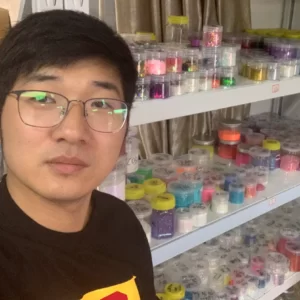Imagine you’re a cosmetic brand owner in search of the perfect product line from quality cosmetics manufacturers to represent your brand. You have an idea in mind, but you also want the packaging design to be just right. You have two options: OEM and ODM cosmetics manufacturing. Each startup approach has its own key points, choice, disadvantages, and considerations that can significantly impact your business’s success.
OEM, or Original Equipment Manufacturer, involves collaborating with a company to produce odm products based on your specific requirements and designs. This collaboration ensures that the final product is a new product tailored to your needs. With OEM, cosmetic manufacturers have complete control over the formulation, packaging, and branding of their products. This allows companies to customize their products according to their preferences and requirements. Additionally, OEM enables mass production, making it an efficient choice for cosmetics manufacturers. On the other hand, ODM, or Original Design Manufacturer, offers ready-made cosmetic products that can be branded by different companies. This is particularly beneficial for OEM companies and OBMs who require mass production. This allows your company to quickly launch new products without investing heavily in research and development, thanks to the benefits of mass production. The brand name and packaging design can also be easily implemented during this process.
We will explore the differences between product design and company services, their advantages, and why choosing the right approach is crucial for your brand’s growth and profitability. Additionally, we will discuss the importance of conducting tests to ensure optimal results.
Understanding the Differences: OEM vs ODM vs CM
OEM focuses on customization, while ODM offers pre-designed products.
OEM (Original Equipment Manufacturer) and ODM (Original Design Manufacturer) are two different approaches that companies make to cosmetics manufacturing. The company can choose either approach to create their own brand name. In the OEM business model, cosmetics manufacturers have the freedom to customize products for their company’s brand name according to specific needs and preferences. They can make everything from the formulation, packaging, and branding with cosmetics ODM and OBM. On the other hand, ODM provides pre-designed products that companies can select from a catalog of options. OBM, on the other hand, focuses on creating and promoting its own brand name. It’s like choosing from a menu at a restaurant rather than creating your own dish with the help of an OBM.
- OEM Pros:
- Customization allows for unique product offerings.
- Companies have control over every aspect of the product.
- Branding can be tailored to match company identity.
- OEM Cons:
- Requires more time and effort in product development.
- Higher costs involved in customizing formulations and packaging.
- May require larger minimum order quantities (MOQs).
- ODM Pros:
- Quick turnaround time as products are already designed.
- Lower initial investment is possible when partnering with a cosmetics ODM, as their ready-made designs and formulations eliminate the need for costly development.
- Smaller MOQs may be available for off-the-shelf cosmetics ODM products.
- ODM Cons:
- Limited customization options compared to OEM.
- Cosmetics ODM products may not align perfectly with a company’s brand image.
- Less control over formulation ingredients and quality.
Contract manufacturing (CM) involves outsourcing production to a third-party manufacturer.
Contract manufacturing (CM) is another approach that companies can consider when looking for a cosmetics ODM. With CM, instead of producing the products in-house or using an OEM/ODM approach, companies outsource the entire production process to a specialized third-party manufacturer. This arrangement allows businesses to focus on other aspects of their operations while leaving the manufacturing expertise to professionals.
- CM Pros:
- Access to specialized manufacturing facilities and expertise.
- Cost-effective solution for companies without their own production capabilities.
- Allows businesses to scale production easily.
- CM Cons:
- Less control over the manufacturing process.
- Potential quality control issues if the chosen manufacturer is not reliable.
- Communication challenges may arise due to working with an external partner.
Each approach has its own advantages and considerations in the cosmetics industry.
Choosing between OEM, ODM, or CM depends on various factors such as budget, time constraints, customization needs, and desired level of control. It’s essential for companies in the cosmetics industry to carefully evaluate these options before making a decision. Some companies may prefer the flexibility and uniqueness offered by OEM, while others may opt for the convenience and cost-effectiveness of ODM or CM.
By understanding the differences between OEM, ODM, and CM approaches in cosmetics manufacturing, businesses can make informed decisions that align with their goals and resources. Whether it’s about creating customized products from scratch or selecting pre-designed options or outsourcing production entirely, each approach has its place in the cosmetics industry. Ultimately, it’s about finding a solution that best suits a company’s specific needs and objectives.
Pros and Cons of OEM and ODM in the Cosmetics Industry
Advantages of OEM in the Cosmetics Industry
OEM, or Original Equipment Manufacturer, offers several advantages for cosmetic brands. Firstly, it allows for greater control over product formulation and branding. With OEM, brands have the opportunity to customize their products according to their specific requirements. This means they can choose the ingredients, packaging, and design that align with their brand image.
Another advantage of OEM is that it enables brands to maintain exclusivity over their products. Since they have control over the formulation and branding, they can ensure that their products are unique and not readily available in the market. This exclusivity helps them stand out from competitors and build a loyal customer base.
Furthermore, OEM provides brands with the flexibility to scale production according to demand. They can easily adjust production volumes based on market trends and consumer preferences. This ensures that they can meet customer demands efficiently without excess inventory or stockouts.
Disadvantages of OEM in the Cosmetics Industry
Despite its advantages, there are also some potential challenges associated with OEM in the cosmetics industry. One major drawback is the minimum order quantities required by manufacturers. Due to economies of scale, manufacturers often require brands to place large orders to make production cost-effective. This may pose a challenge for small or emerging cosmetic brands with limited budgets or uncertain demand.
Another disadvantage is limited design flexibility when working with an OEM manufacturer. Brands may have certain design specifications or packaging ideas that cannot be fully realized due to manufacturing limitations or restrictions imposed by suppliers. This lack of design freedom may hinder brands from fully expressing their creativity and uniqueness.
Relying on an OEM manufacturer means putting trust in another party for quality control. While most reputable manufacturers adhere to strict quality standards, there is still a risk of subpar product quality if proper due diligence is not conducted during supplier selection.
Advantages of ODM in the Cosmetics Industry
On the other hand, ODM, or Original Design Manufacturer, offers its own set of advantages for cosmetic brands. One key advantage is cost savings. ODM manufacturers have pre-existing product designs and formulations that can be readily used by brands. This eliminates the need for extensive product development and formulation costs, resulting in significant cost savings.
ODM also enables faster time-to-market for cosmetic brands. Since the manufacturing processes and formulations are already established by the ODM manufacturer, brands can quickly launch new products without the lengthy development phase. This allows them to capitalize on market trends and consumer demands more efficiently.
Moreover, working with an ODM manufacturer provides access to their expertise and industry knowledge. These manufacturers have experience in developing successful cosmetic products and can offer valuable insights and guidance to brands. This collaboration can enhance product quality and increase the chances of success in the competitive cosmetics market.
Disadvantages of ODM in the Cosmetics Industry
While ODM has its advantages, it also comes with certain disadvantages that brands should consider. One major drawback is limited control over product formulation and branding. Since brands are using pre-existing designs and formulations from an ODM manufacturer, they may not have complete control over these aspects. This may result in less customization options or a lack of uniqueness compared to OEM-manufactured products.
Another challenge with ODM is the potential lack of exclusivity. Since multiple brands may utilize the same pre-existing designs or formulations from an ODM manufacturer, there is a risk of having similar or identical products in the market. This can dilute brand differentiation and make it harder for brands to stand out from competitors.
Some ODM manufacturers may have limitations on order quantities or production flexibility. Brands may need to adhere to minimum order quantities or face restrictions on making modifications to existing designs or formulations. These limitations could pose challenges for brands looking for more flexibility or customization options.
Industry and Market Requirements for Cosmetics Manufacturing
In the world of cosmetics manufacturing, there are certain industry and market requirements that manufacturers must meet to ensure their products are safe, compliant, and appealing to consumers. Let’s take a closer look at these requirements and understand why they are so important in the cosmetics industry.
Compliance with Regulatory Standards
One of the foremost requirements in cosmetics manufacturing is compliance with regulatory standards, such as those set by the FDA (Food and Drug Administration). These regulations aim to protect consumers from potential harm caused by unsafe or mislabeled products. Manufacturers must adhere to strict guidelines regarding ingredient safety, labeling accuracy, and product testing. Failure to comply with these regulations can result in fines, legal consequences, and damage to a brand’s reputation.
Influence of Market Trends
The cosmetics industry is highly influenced by ever-changing market trends. To stay competitive and meet consumer demands, manufacturers need to stay abreast of the latest trends in product development, packaging, and marketing strategies. This includes keeping up with popular ingredients, innovative formulations, unique packaging designs, and effective marketing techniques. By aligning their offerings with current market trends, manufacturers can capture consumer attention and drive sales.
Meeting Consumer Preferences for Natural or Organic Ingredients
In recent years, there has been a significant shift towards natural or organic ingredients in cosmetic products. Consumers are becoming more conscious about what they put on their skin and prefer products that are free from harsh chemicals or synthetic additives. Therefore, it is crucial for cosmetics manufacturers to cater to these preferences by sourcing high-quality natural or organic raw materials for their products. By doing so, they not only meet consumer demands but also position themselves as environmentally-friendly brands.
To summarize:
- Compliance with regulatory standards like FDA regulations is crucial in cosmetics manufacturing.
- Keeping up with market trends helps manufacturers develop relevant products.
- Meeting consumer preferences for natural or organic ingredients is essential.
By understanding these industry and market requirements, cosmetics manufacturers can navigate the competitive landscape and create products that resonate with consumers. It is important for manufacturers to prioritize safety, quality, and innovation to build a successful brand in the cosmetics industry.
Packaging and Design Flexibility in OEM vs ODM
Packaging and design play a crucial role in attracting customers and reflecting a brand’s identity.
Freedom to Customize Packaging Designs with OEM
With OEM, brands have the freedom to customize their packaging designs according to their unique brand identity. This means they can create packaging that aligns perfectly with their target market and brand positioning. From choosing the materials, colors, shapes, and sizes to incorporating specific branding elements such as logos or slogans, brands have complete control over the visual appeal of their products.
This flexibility allows brands to stand out on the shelves by creating packaging that is eye-catching and memorable. They can experiment with different design elements to create a cohesive brand image across their product range. For example, a luxury skincare brand may opt for elegant and sophisticated packaging designs using premium materials like glass or embossed finishes.
Standardized Packaging Options with ODM
On the other hand, ODM provides standardized packaging options that may limit design flexibility but offer cost advantages. ODM manufacturers typically have pre-designed packaging templates that brands can choose from. These templates are already tested for functionality and efficiency, ensuring that products are packaged securely.
By opting for standardized packaging options provided by an ODM manufacturer, brands can save time and money on designing custom packaging from scratch. This approach suits brands that prioritize cost-effectiveness over unique visual aesthetics. For instance, a budget-friendly makeup line might choose simple yet functional plastic containers with standard labeling options.
However, it’s important to note that even within the constraints of standardized options, there is still room for customization. Brands can often select variations such as color choices or minor modifications to existing designs provided by the ODM manufacturer. This allows them to add some personalization while still benefiting from the cost advantages of ODM.
Balancing Aesthetics, Functionality, and Cost
When deciding between OEM and ODM for cosmetics manufacturing, brands must consider the balance between aesthetics, functionality, and cost. OEM provides greater design flexibility but may come with a higher price tag due to the customization process. On the other hand, ODM offers cost advantages but limits design options to pre-existing templates.
To make an informed decision, brands should evaluate their target market’s preferences, budget constraints, and overall brand strategy. They should also consider factors such as product differentiation, shelf appeal, and packaging sustainability. By striking a balance between these elements, brands can choose the approach that best aligns with their goals and resources.
Production Planning and Scheduling in OEM and ODM
In the world of cosmetics manufacturing, production planning and scheduling play a crucial role in ensuring timely delivery of products. Let’s delve into how these processes differ in OEM and ODM approaches.
OEM Production Planning: Coordinating Brand Owners and Manufacturers
In OEM (Original Equipment Manufacturer) cosmetics manufacturing, production planning involves close coordination between brand owners and manufacturers. The brand owner provides the specifications, requirements, and timelines to the manufacturer. This information is essential for the manufacturer to plan their production schedule effectively.
Pros of OEM Production Planning:
- Allows brand owners to have control over product specifications.
- Enables customization according to specific brand requirements.
- Provides flexibility in adapting to market trends or changes.
Cons of OEM Production Planning:
- Requires effective communication channels between brand owners and manufacturers.
- May lead to longer lead times due to coordination efforts.
- Can be challenging if there are frequent changes or revisions from the brand owner.
ODM Streamlined Production Planning: Following a Predetermined Schedule
On the other hand, ODM (Original Design Manufacturer) cosmetics manufacturing streamlines production planning by following a predetermined schedule set by the manufacturer. The manufacturer designs, develops, and produces cosmetic products based on market demand without direct involvement from brand owners.
Pros of ODM Production Planning:
- Offers faster lead times as manufacturers have pre-planned schedules.
- Reduces coordination efforts between brand owners and manufacturers.
- Provides cost-effective solutions as manufacturers can leverage economies of scale.
Cons of ODM Production Planning:
- Limited customization options for brand owners.
- Less control over product specifications compared to OEM.
- Potential risk of similarity among products produced by different brands using the same manufacturer.
Efficient Communication Channels Are Key
Regardless of whether you choose an OEM or ODM approach for cosmetics manufacturing, efficient communication channels are vital for successful production planning. Clear communication between brand owners and manufacturers ensures that all parties are aligned on product specifications, timelines, and any changes that may arise during the production process.
To facilitate effective communication, it is essential to establish regular meetings or check-ins with the manufacturer. This allows for real-time updates, clarifications, and adjustments as needed. Utilizing digital tools and platforms can also enhance communication efficiency, enabling seamless collaboration between brand owners and manufacturers.
Ensuring Quality Consistency in Manufacturing
Quality control is a vital aspect of the manufacturing process, whether it involves OEM or ODM cosmetics. By implementing robust quality control measures throughout the production journey, manufacturers can ensure consistent product quality that meets customer expectations. Regular audits and inspections play a crucial role in maintaining these quality standards.
Implementing Quality Control Measures
To achieve consistent product quality, manufacturers must establish and implement effective quality control measures. These measures encompass various stages of the manufacturing process, from sourcing raw materials to the final inspection of finished products. By adhering to these measures, manufacturers can identify and rectify any potential issues before they affect the overall product quality.
One key aspect of quality control is conducting thorough inspections during mass production. This step ensures that each unit meets specific criteria for its intended purpose. Manufacturers may employ visual inspections or use specialized equipment to test for factors like color accuracy, texture consistency, and packaging integrity.
Another essential measure is establishing standard operating procedures (SOPs) for each stage of production. SOPs provide clear guidelines for workers to follow, ensuring consistency across all manufactured products. These procedures outline critical steps such as ingredient measurement, mixing ratios, temperature controls, and packaging techniques.
Regular Audits and Inspections
Regular audits and inspections are crucial components of maintaining quality consistency in both OEM and ODM manufacturing processes. These assessments help identify any deviations from established standards and enable timely corrective actions.
Manufacturers often conduct internal audits to assess their adherence to Good Manufacturing Practices (GMP). GMP outlines industry-specific regulations that ensure products are consistently produced according to predetermined quality standards. By conducting internal audits regularly, manufacturers can proactively address any non-compliance issues and maintain high-quality standards.
External inspections by third-party organizations also play a significant role in ensuring product quality consistency. These independent assessments validate that manufacturers adhere to industry regulations and meet specific certification requirements. Collaborating with reputable manufacturers who have achieved certifications such as ISO 9001 or ISO 22716 demonstrates a commitment to quality assurance.
Collaboration with Reputable Manufacturers
Collaborating with reputable manufacturers is essential for ensuring quality consistency. Reputable manufacturers prioritize quality control measures and have established systems in place to deliver high-quality products consistently.
Working with trusted manufacturers who adhere to GMP helps maintain brand reputation by delivering products that meet or exceed customer expectations. These manufacturers understand the importance of using quality ingredients, following precise production processes, and conducting thorough inspections at each stage.
Choosing Between OEM and ODM for Your Business Needs
We discussed the pros and cons of each approach, as well as the industry and market requirements that can influence your decision. We also looked at factors like packaging flexibility, production planning, scheduling, and quality consistency.
Now that you have a better understanding of OEM and ODM, it’s time to make a choice that aligns with your business needs. Consider your specific goals, resources, and preferences. Are you looking for more control over product development? Do you want to leverage existing formulas and designs? Assessing these factors will help you determine whether OEM or ODM is the right path for your cosmetics manufacturing venture.
Remember, selecting the right manufacturing approach is crucial for success in this competitive industry. Take your time to evaluate all aspects of your business before making a decision. And if you ever need further guidance or support along the way, don’t hesitate to reach out to industry experts or consult with experienced professionals.
FAQs
Can I switch from OEM to ODM (or vice versa) if my business needs change?
Yes, it is possible to switch from OEM to ODM or vice versa depending on your evolving business needs. However, keep in mind that transitioning between these approaches may involve additional costs and considerations such as rebranding efforts or changes in supply chain management.
How can I ensure quality consistency in both OEM and ODM manufacturing?
To ensure quality consistency in both OEM and ODM manufacturing processes, it’s essential to establish clear communication channels with your chosen manufacturer. Regularly communicate your expectations regarding product specifications, quality standards, and performance metrics. Conduct thorough inspections at different stages of production to identify any potential issues early on.
What are some common challenges faced when choosing between OEM and ODM?
Some common challenges when choosing between OEM and ODM include finding the right manufacturer that aligns with your business goals, negotiating favorable terms and conditions, maintaining control over intellectual property, and managing supply chain logistics efficiently.
Are there any legal considerations when working with OEM or ODM manufacturers?
Yes, there are legal considerations when working with OEM or ODM manufacturers. It’s crucial to have well-drafted agreements in place that clearly define each party’s rights, responsibilities, and obligations. Protecting your intellectual property through patents, trademarks, or copyrights is also advisable.
Can I use a combination of OEM and ODM for my cosmetics manufacturing?
Yes, you can use a combination of OEM and ODM approaches for your cosmetics manufacturing. This hybrid approach allows you to leverage the strengths of both methods. For example, you can develop unique formulations through an ODM partnership while using an OEM manufacturer for packaging customization.















